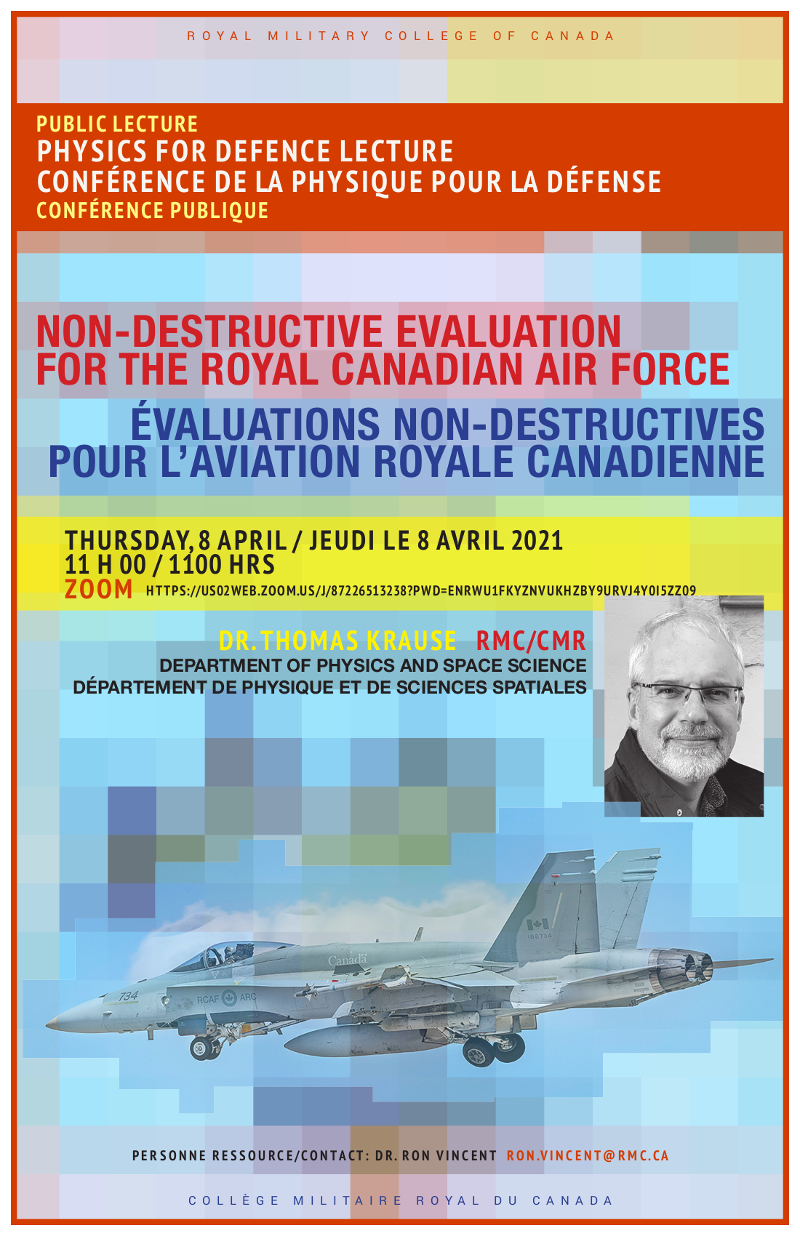The annual Physics for Defence public lecture presents unclassified research carried out by faculty in the Department of Physics and Space Science, and its connections with the mission of the Department of National Defence and the Canadian Armed Forces. .
Public Lecture: Non-Destructive Evaluation for the Royal Canadian Air Force
Dr. Thomas Krause, RMC
 Thursday, 8 April, 2021
Thursday, 8 April, 2021
11:00
ZOOM Connection:
HTTPS://US02WEB.ZOOM.US/J/87226513238?PWD=ENRWU1FKYZNVUKHZBY9URVJ4Y0I5ZZ09
Department of Physics and Space Science
Contact: Dr. Ron Vincent, 613-541-6000 ext. 6932, or Ron.Vincent@rmc-cmr.ca
Abstract
Aircraft in the Royal Canadian Air Force (RCAF) are flown with a damage tolerance approach. That is “Have Cracks, Will Fly”. In this approach cracks, especially fatigue cracks, need to be found before they can reach a critical size that could potentially cause in-flight failure of the aircraft. The detection of cracks is accomplished by various non-destructive inspection methods that are performed as part of a periodic inspection program, with the goal of detecting cracks small enough that they won’t grow to their critical size before the next inspection. The most common of these techniques are based on electromagnetics, known collectively as eddy current testing. This talk will present an overview of non-destructive evaluation and recent developments in electromagnetic inspection technology and methods. Examples will include techniques developed for aging aircraft such as the CF-188 Hornet, CP-140 Aurora and CC-130 Hercules.
Fatigue cracks most often form at fasteners, thousands of which are used to hold aircraft together. Cracks are most difficult to detect in the second or third layer of these multilayer aircraft structures. A currently used inspection method is bolt hole eddy current, but it requires removal of the fasteners, which takes time and carries inherent risk of additional damage to aircraft components. The focus of this talk will be the development of pulsed eddy current methods, which can detect second layer cracks without fastener removal. The talk will present the underlying physics, technology and methods used to accomplish this, and present ongoing research towards the development of safer flight for RCAF aircraft.